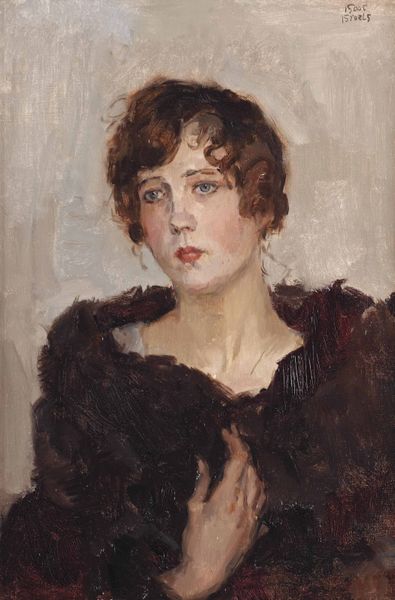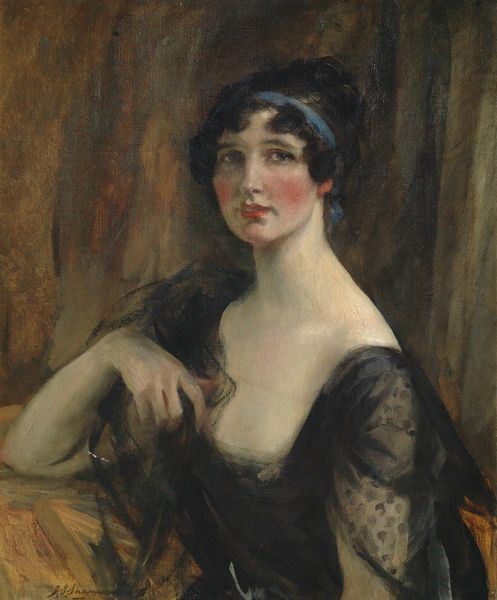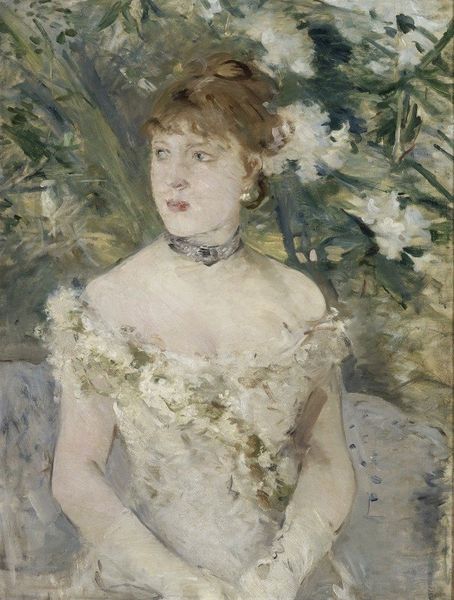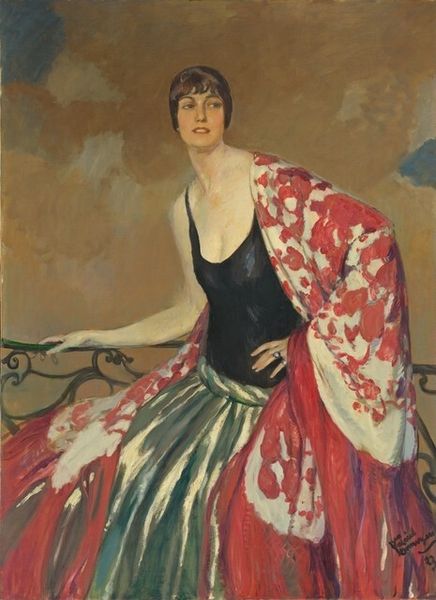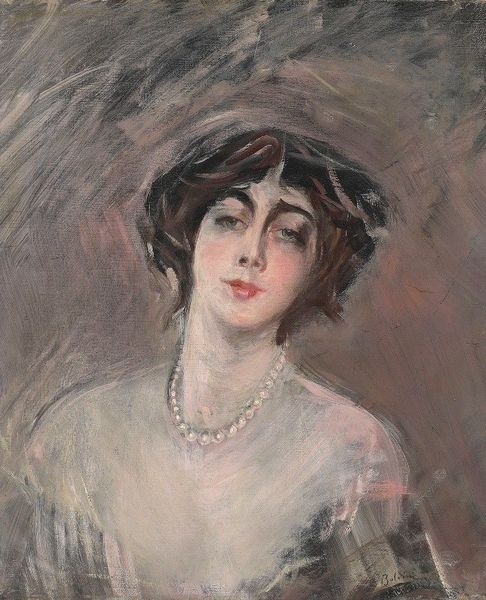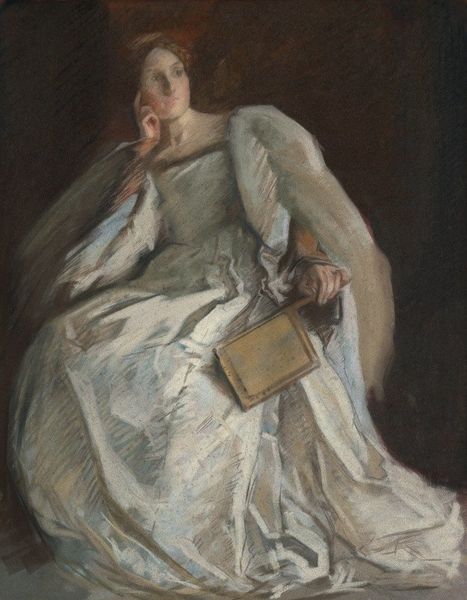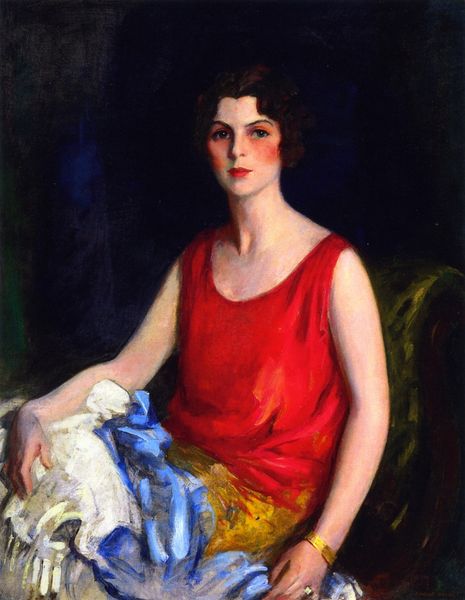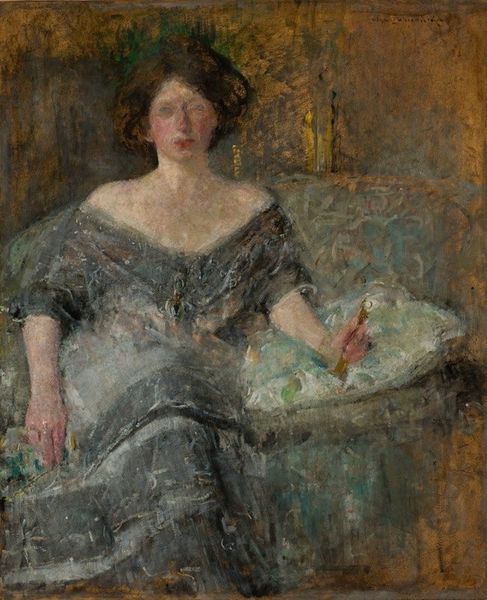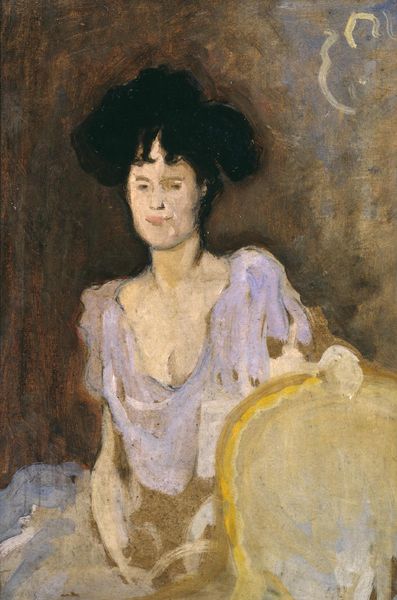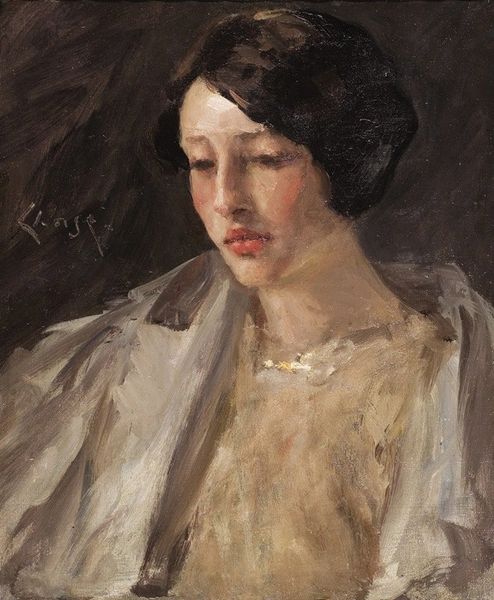
painting, oil-paint
#
portrait
#
painting
#
oil-paint
#
figuration
#
oil painting
#
intimism
#
portrait art
#
modernism
Copyright: Public domain US
Editor: Here we have Arthur Beecher Carles' "Woman in White," painted in 1920. It's an oil painting, a very intimate portrait. The soft colors and her downward gaze create a mood of introspection. What strikes you most about this piece? Curator: I’m drawn to the tension between the intimacy you mention and the way this work situates itself within a very public conversation about women. Consider the era: 1920, right after women won the right to vote in the US. How does Carles’ depiction of a woman "in white"—a color laden with associations of purity and innocence—play into the social expectations and shifting roles of women at the time? Editor: That’s a perspective I hadn’t considered. I saw it more as a personal moment, but thinking about it now, "Woman in White" feels almost staged, aware of being observed. Curator: Exactly. It makes me think about the power dynamics inherent in portraiture and who gets to represent whom, and in what manner. Think about how images of women circulated at this time, particularly in advertising. Do you notice echoes or challenges to those existing visual tropes? Editor: Now that you mention it, her demure pose feels a bit like an advertisement, but her direct gaze challenges the passivity often associated with those images. It's almost like she's both participating in and subverting expectations simultaneously. Curator: Precisely. And this is where thinking about the social context enriches our understanding. It reveals the complex negotiations around female identity occurring in art and society during this pivotal period. Editor: This has really changed how I see the painting. It's no longer just a quiet portrait; it’s a statement. Thanks for broadening my understanding of the work! Curator: My pleasure! I am glad you understand the relevance and influence of social context around art production.
Comments
No comments
Be the first to comment and join the conversation on the ultimate creative platform.
